CRM Job Report May 2022
Tracking CRM employment demand, wages & required education
Twin Cairns is six months old, and we now have enough data to provide the CRM community with monthly employment information. It is our hope that this report will afford both job seekers & employers actionable information about the current CRM job market. This will be the first monthly job report, a service we plan to continue and deliver at no cost to the community.
The tsunami of jobs in the CRM sector, as predicted by Altschul & Klein n.d. and Aitchison & Dore 2022, is already here. Historically, shovelbums & archaeologyfieldwork.com published an average of 49 and 65 job posts per month, respectively (with a peak of 112 job posts in Oct 2006 for shovelbums and 264 job posts in Feb 2015 for archaeologyfieldwork.com). These numbers are surpassed by wide margins since the beginning on 2022 (Fig 1). Historical data suggest the hiring pace will gather additional steam as we move towards the 3rd quarter of the year (Jul-Oct, Fig. 2)
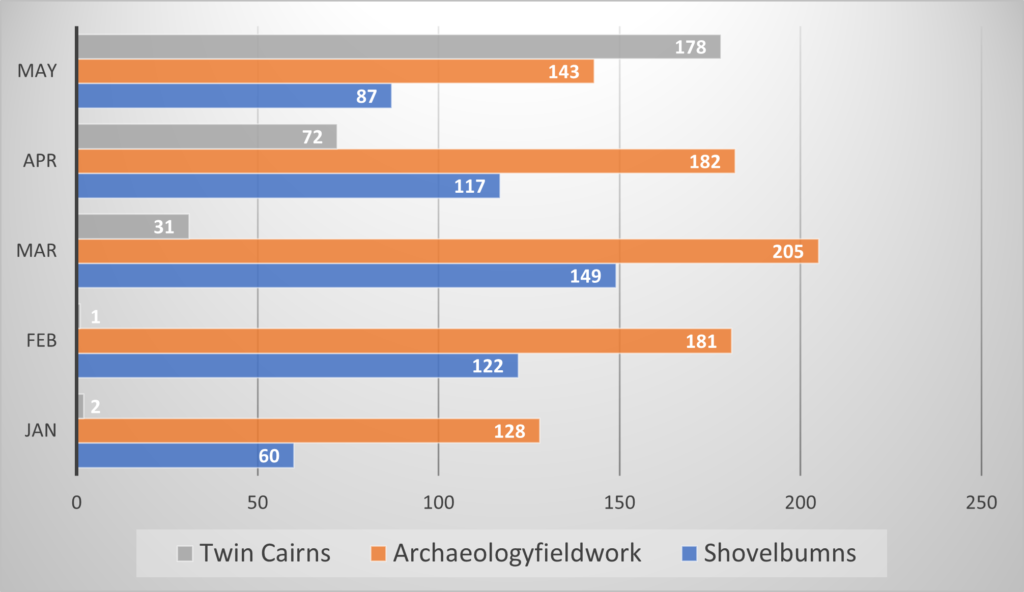
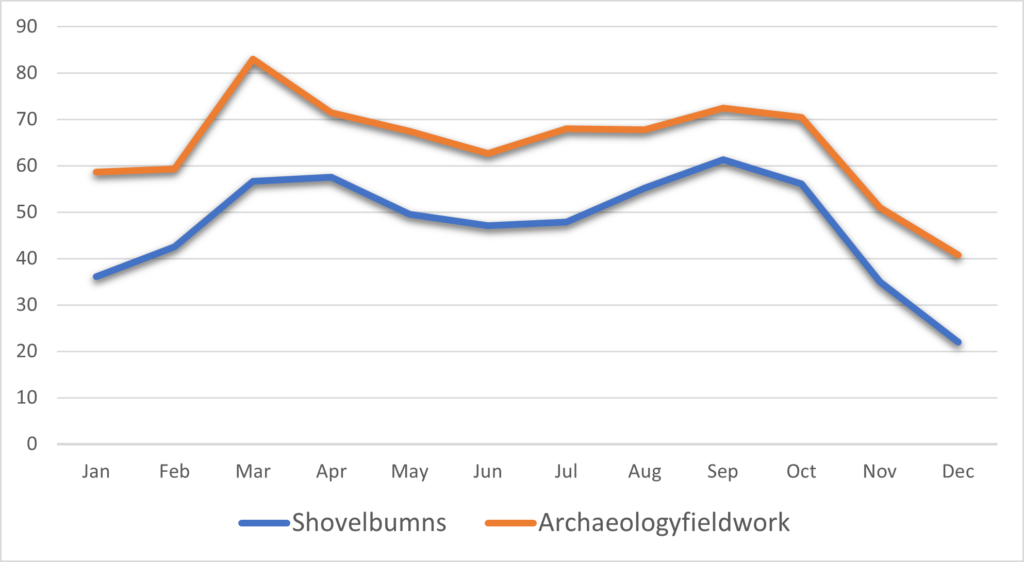
Most job posts are for Field Techs. But there is also a strong demand for Project Managers/Principal Investigators (Fig 3). High demand seems to be equally distributed across the country, with the exception of the Northeast and Northwest, where demand is still anemic (Fig. 4).
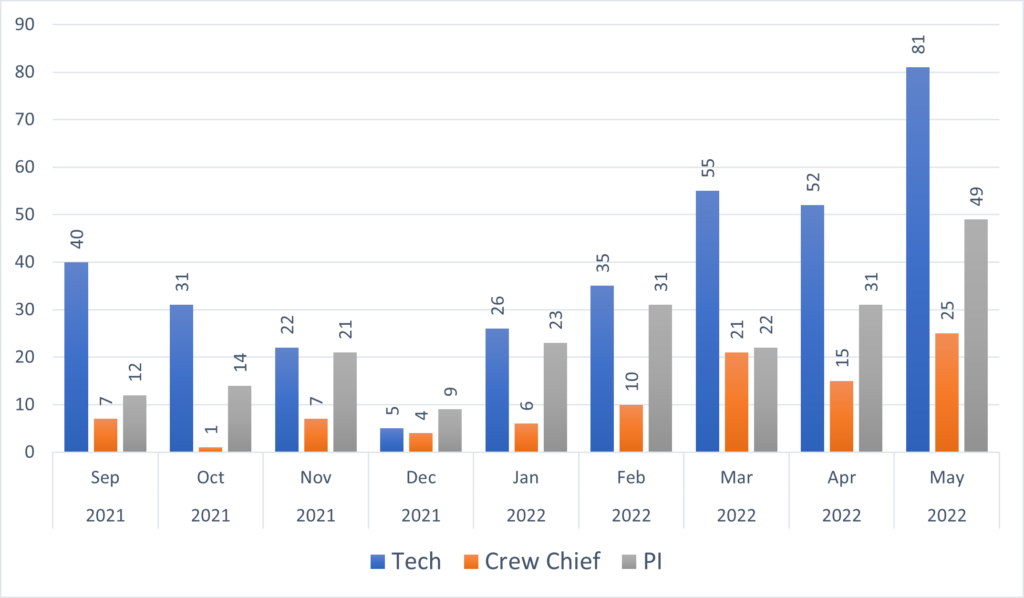
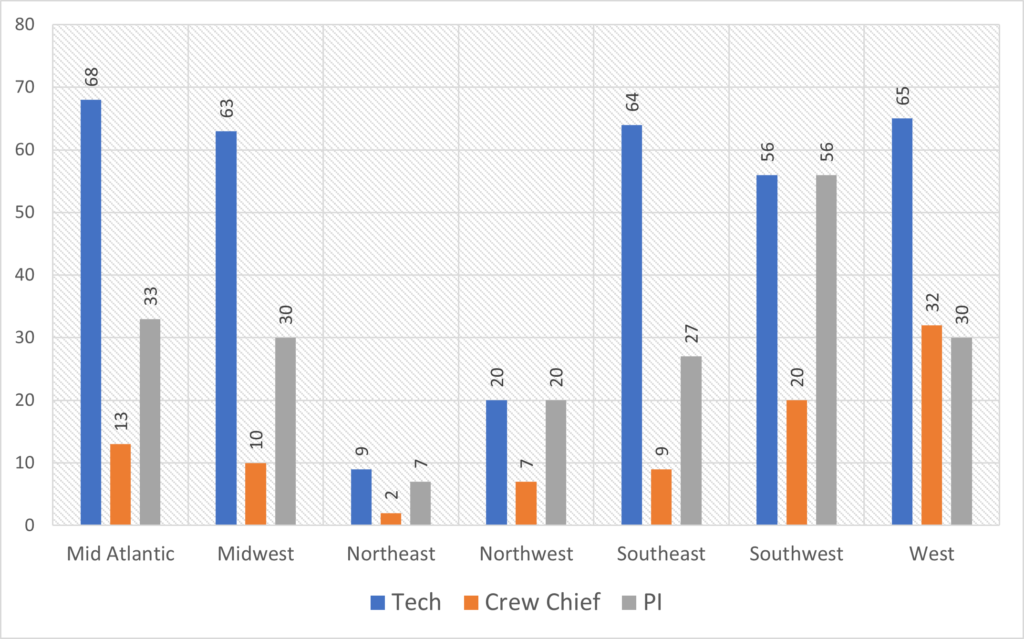
As predicted by some industry insiders, the big engineering firms are building their CRM compliance capacity – 23% of all jobs in May were posted by such companies (Fig. 5). Government is not far behind, especially the federal government, with 22% of all job posts. Government jobs are typically for more experienced CRM professionals, while everyone else hires at all levels.
Education requirements for Crew Chiefs and PM/PI’s remain largely in compliance with the Department of the Interior Professional Standards (MA/MS Degree). Education requirements for Field Techs, however, are increasingly diminishing – 16% of all job posts for field techs in may did not require a bachelor’s degree (Fig. 6). Given how extremely few fields school were offered in the past two years (due to the pandemic), it is not surprising that only 56% of all Field Tech job posted in May require field school training as condition of employment (Fig. 7). We just begun documenting education and training requirements so there is not (yet) comparative data available.
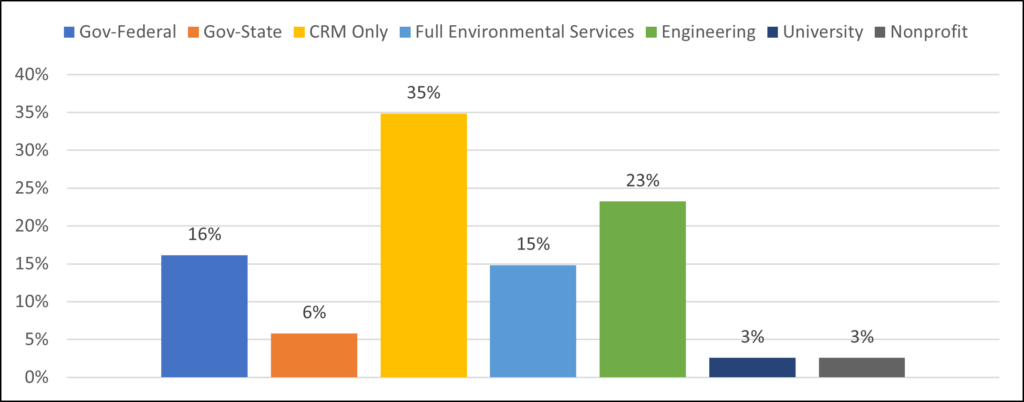
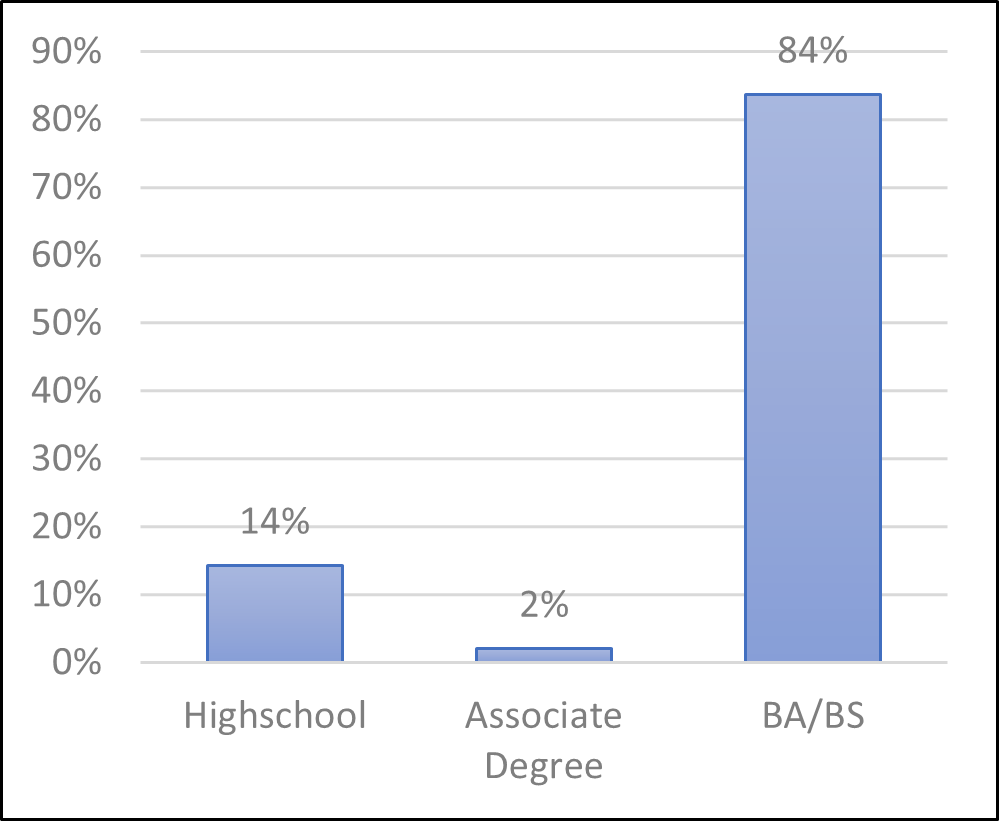
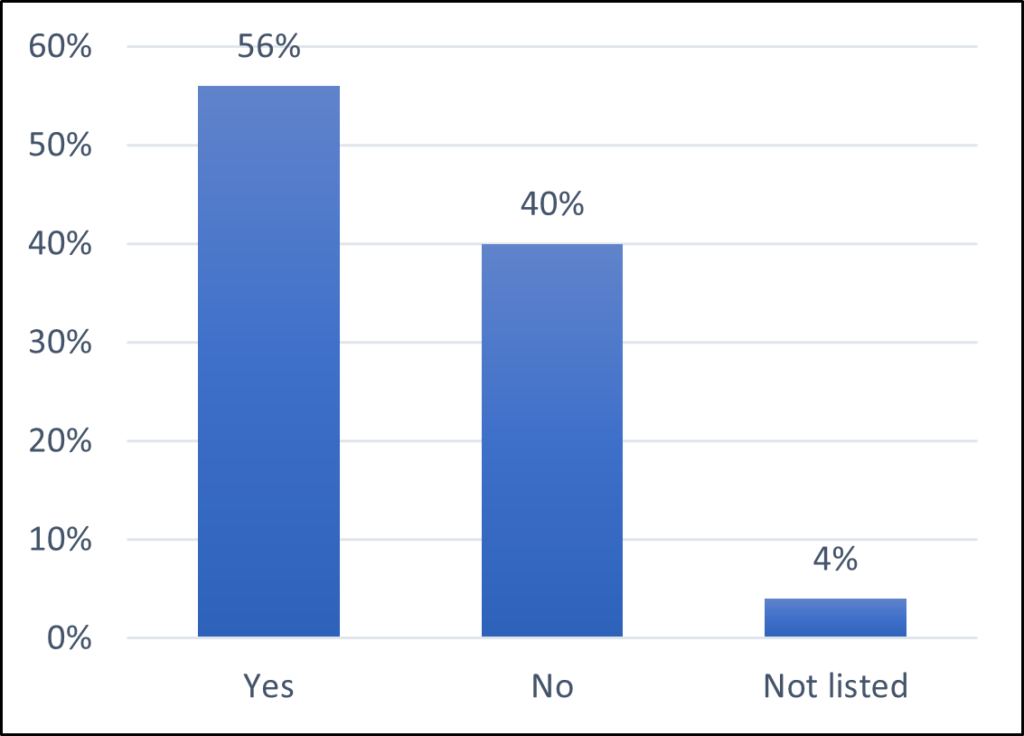
Market forces are pushing CRM employers to adjust in various ways. In May job posts, almost all employers, regardless of job type, published salary data – a dramatic change from just eight months ago (Fig. 8). Notwithstanding this positive change, wages for Field Techs are stagnant and have not been growing despite increasing demand (Fig. 9). This wage stagnation is evident across the US, but except for the West, where average Field Tech wages increased in May 2022 (Fig 10). This increase is likely reflecting the increased demand for Field Techs in this region.
Wages for Crew Chiefs and PM/PI’s are increasing as the market adjusts to labor shortages in these positions (Fig. 9). We do not have enough data to provide regional distribution for these job types, but will do so in the future, when we analyze data by annual quarters.
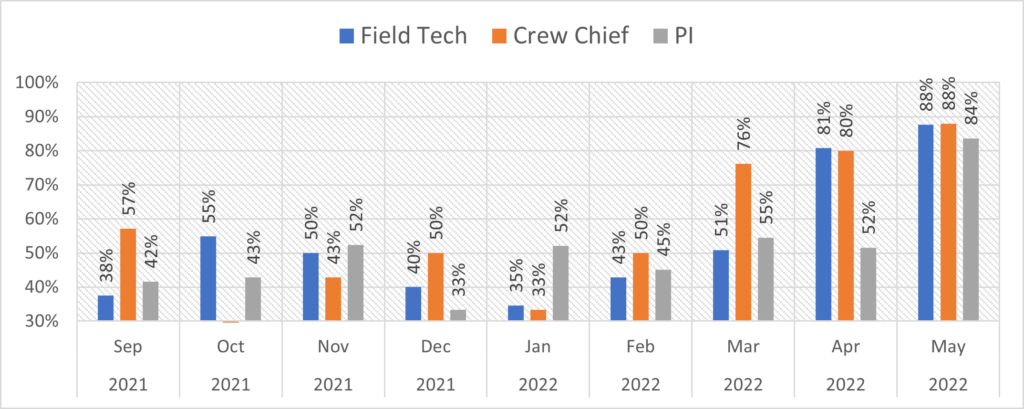
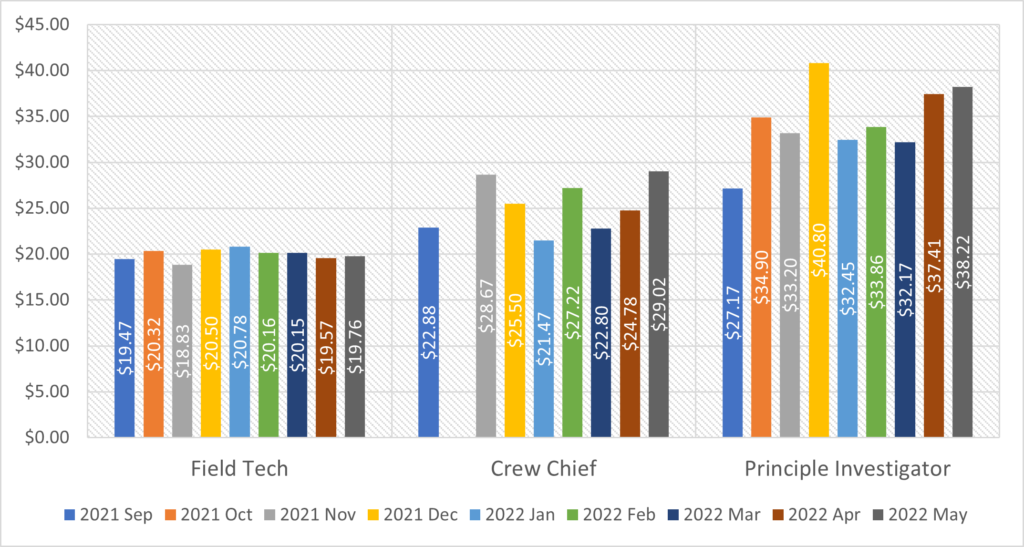
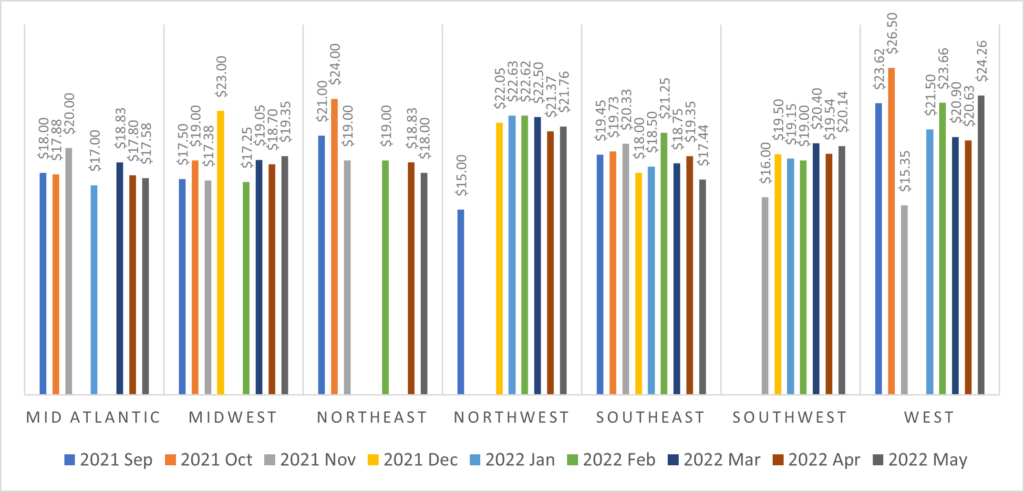
Twin Cairns will continue and publish monthly employment data from the CRM sector. As more positions are offered and posted on our site, the Twin Cairns Research arm will gain progressively more nuanced understanding of the sector, which we will record, analyze, and share. Because the current dataset is relatively small (total of 665 jobs analyzed), we are careful with any conclusions or observations. As the dataset will grow, we will offer interpretations and opinions, but those will always be separated from the data itself

